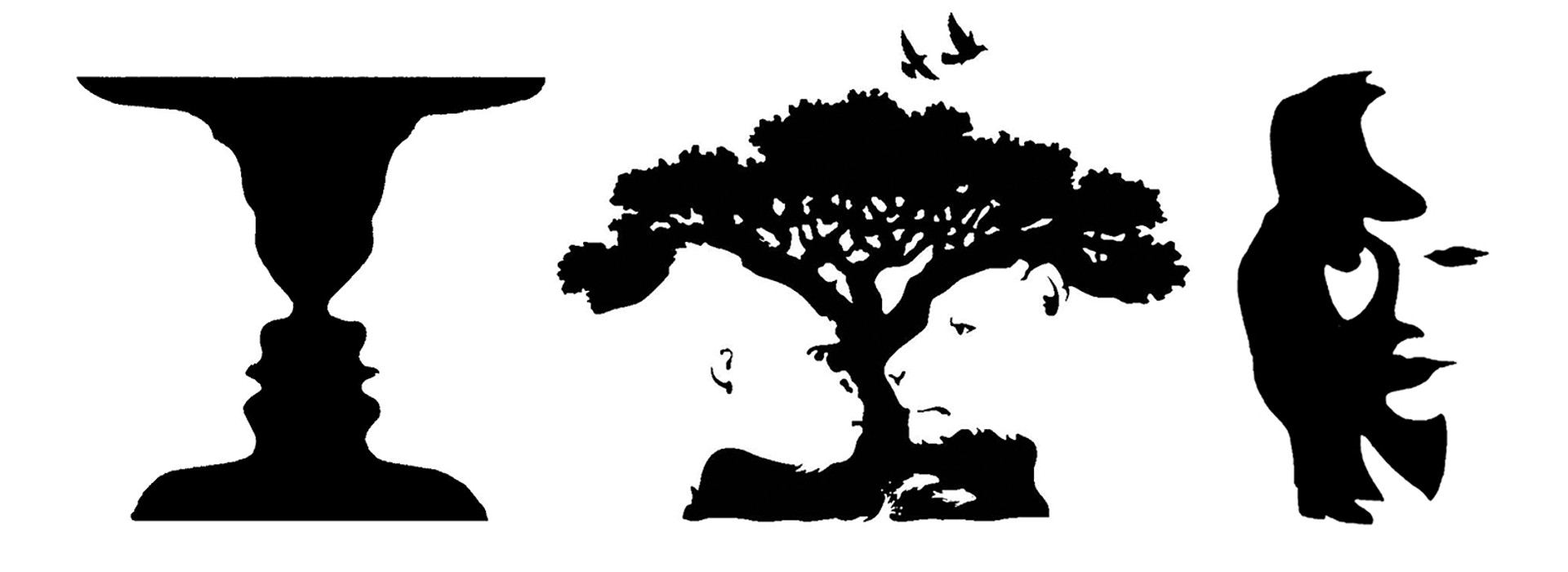
What is dependent arising?
- left image: Do you see two white faces in profile or a black Rubin's vase?
- centre image: Do you see a black tree and birds or do you see a white gorilla facing a white lioness?
- right image: Do you see the black silhouette of a man playing a saxophone or a composite black and white image of a woman's face?
The very first image you noticed (at first glance) was the image you most closely identified with your focus of conscious attention. However you should have been able, after me giving you both possibilities, to see both images. But what you should find, is that you cannot see both possible images from left to right at the same time. The focus of your conscious attention just cannot handle this. You can only see one image by making the other image the background and discounting it altogether from your conscious attention. This is what is known as separateness. So hold onto that thought for now, and keep it in recall memory. I will be referring back to this exercise further down the page.
Examples of dependent arising
-
Existence and reality
Existence and reality always go together in the form of consciousness and space. You cannot find any form of existence, especially physical existence, without space. You also cannot perceive space unless you yourself are conscious. But see here's the thing, consciousness is space, and space is also consciousness from our perspective, because neither have any physical form. To make it simpler in terms of language consciousness is defined as existence, because it is 'IN-formation', i.e. capable of manifesting as physical form. Consider that intuition, inspiration not to mention fresh energy every time you wake up in the morning arises out of consciousness. Space is defined as reality, because it not only connects everything to everything else, but it defines it and gives it shape.
-
Self and other
It's not possible to exist without being relative and in a relationship with everything else. You are relative to your natural environment and this planet - through the air you breathe, the water you drink, the heat and food you need, and even the ground you walk on. you are also relative to other people through the human species, biology, society, culture, personal relationships and your mind. There is no separateness whatsoever. Not unless you can see things other people can't see, you hear things other people can't hear and you speak a language nobody else understands.
-
Karma (memory and action)
This is a really important one because karma is the basis of physical existence and thus three of the five dimensions of life. Karma, which is a Sanskrit word meaning 'action' as in action, reaction and interaction. There are two aspects to karma which are memory (physical form) and action, which can also be understood to be form and motion. Memory here means memory in the widest possible, sense, including biological cells and physical mass. There is no ending and no beginning because karma is based on energy, energy cycles and energy vibrations. A cycle has no beginning and end, it is just an incarnation, and each incarnation through reincarnation connects to other incarnations in a process. This is known as the chain of interdependent origin. Qultura methodology is based almost entirely on karma.
-
Love & death
Then we finally conclude our examples with perhaps the greatest example from the perspective of human existence and is also one of the most important polarities we ever get to experience, and that is the polarity between love and death, which are polar opposites. Neither love nor death can cancel each other out. When someone you love dies you do not forget about them, do you? But similarly when someone you love leaves you and the relationship ends, if it was a significant relationship, you suffer a bereavement and go through a similar grieving process as if they had died.
